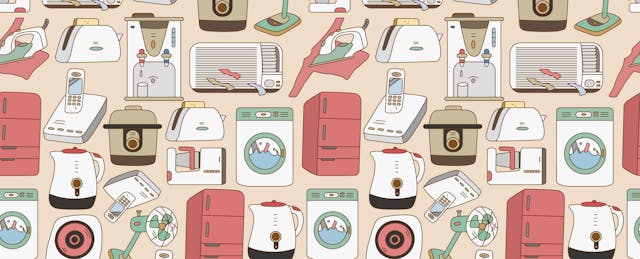Education innovators love to talk about adoption curves. It’s a fancy way of looking at a pretty basic concept: the rate at which a given tool, model or approach saturates a market.
Lately, I’ve been seeing these curves crop up a lot in the conversation about personalized learning. As more school systems attempt to customize learning environments and more education advocates and funders champion personalized models, people are increasingly anxious to know: At what rate might we expect new ideas and tools to permeate the traditional school system?
But not all adoption curves are created equal. Depending on the features of the tools and their intended users, the arc of adoption might look vastly different. One of those distinctions hinges on the degree to which a new tool or model conforms to the traditional school structure.
To understand these differences we can look to historical data on how consumers absorbed all sorts of new gadgets that hit the market throughout the 20th century. My colleague at the Christensen Institute, Horace Dediu, has researched these patterns to try to explain such trends and interrogate anomalies. Last year, he highlighted a puzzling divergence in the data on the early adoption of home appliances. In the 1930s, two delightfully convenient innovations hit the market: the refrigerator and the washing machine.
Refrigerators quickly took hold, gaining over 90 percent adoption by the late 1950s. But households crept much more slowly up the washing machine adoption curve, only getting close to market saturation in the late 1990s. Dediu hypothesizes that this had little to do with housewives’ weighing the pros and cons of being clothed or fed. Instead, he argues, the disparate adoption rates reflect the relative conformability of each innovation to the midcentury home or apartment. Most households had electrical outlets that refrigerators could plug into directly, thus leaving iceboxes in the dust. But few homes had the pipes and drain lines required to install a washing machine.

In other words, homes at the time were never designed with washing machines in mind. As a result, to take advantage of the new technology households didn’t just have to shell out money; they had to hire a plumber to configure the pipes that would pump water into and drain water out of the new contraptions.
The same might be said of the various technological innovations hitting the education market today. Most edtech companies enthusiastically claim to make teaching and learning more effective, efficient and convenient. But not all tools plug into the same interfaces, and not all schools and classrooms were built with these modern innovations in mind. Some tools are proving to be plug-compatible tools that can be inserted into traditional classrooms relatively seamlessly. For example, short cycle tutorial tools, like Khan Academy, fit tidily into many classrooms and can unobtrusively supplement traditional models on the margin. These tools tend to help classrooms achieve outcomes along traditional dimensions like boosting average test scores and providing help to learners who are struggling on a given topic.
On the other hand, other edtech products and models can’t simply plug into the traditional classroom structure or school schedule—the school instead has to fundamentally change or adapt its infrastructure in order to accommodate the tool. For example, models like Teach to One or Summit Learning’s Platform require far greater re-engineering of classrooms processes. Schools need a new set of proverbial pipes—potentially new infrastructure, new schedules, and even entirely new approaches to teaching—to adopt these innovations and to use them to their full potential.
It also bears noting that unlike the drainpipes, this reconfiguration of schools is extremely complex and often interdependent with local policies, culture, and geographic or financial limitations. It’s not surprising, then, that the past few years have seen a flourish of intermediaries, like Transcend and 2Rev, that are stepping in to work alongside schools to help them to fundamentally reengineer their pipes and plugs.
Sketching out these distinct adoption curves might feel bleak if you’re an entrepreneur building the proverbial washing machines of edtech, or a funder hoping for speedy adoption of next-generation models that disrupt traditional classrooms. But they should also lend us a healthy dose of hope and reality about what adoption looks like depending on how much reengineering customers will be expected to do in order to absorb a new tool. It should also help us to better align resources that philanthropists and policymakers are investing in moving people along edtech and personalized learning adoption curves.
Luckily, it’s becoming increasingly acknowledged that we need to pair investments in edtech tools with investments in professional development. But for the tools and models that least conform to traditional school structures, we’re also likely to need investments in fundamental reengineering—that is, not just developing teachers’ proficiency in using tools but rethinking processes like schedules, evaluations and staffing throughout an entire school building or district.
With that dose of reality we can start to predict adoption with greater precision. We can also predict when adoption might not take off. On the other hand, if we ignore the costs of conformability and hope that schools will just figure out how to use wholly new models within their existing paradigm, the promise of new innovations may fall short. It’s like trying to plug a washing machine’s hose into an electrical outlet. It doesn’t end well.


